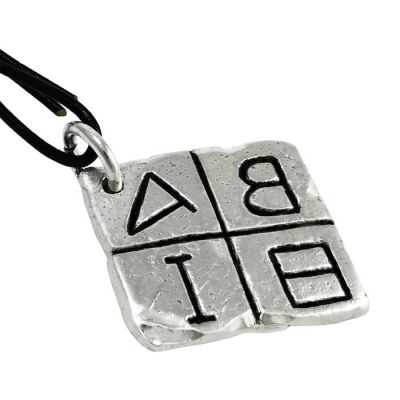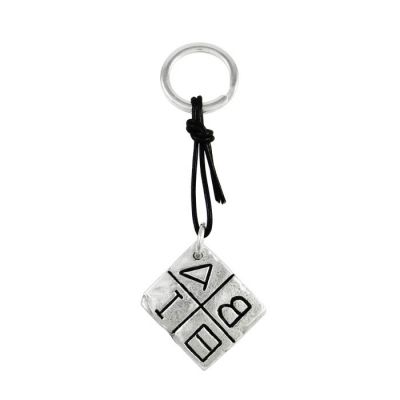For the admirers of the ancient greek culture and the greek alphabetic system, we created a lucky charm as a key-ring, with letters of the local variants of the greek alphabetic script, which were used in Peloponnese, Central Greece, Thessaly, Attica, the islands of the Aegean and from the cities of Ionia. The greek alphabetic script is a left writing system, dating to 8th - 7th century B.C. This exceptional lucky charm is made out of silver-plated brass and is attached with black leather on the ring.
Dimensions of the greek alphabetic script: 3 cm x 3 cm x 3 mm
Dimensions of the key-ring: 3 cm x 11,5 cm x 3 mm
Order yours now in silver 999° or offer it as a gift to your loved ones!
All prices include VAT.
The Greek alphabet is the script that has been used to write the Greek language since the 8th century BC. It was derived probably from the earlier Phoenician alphabet. The Greek alphabet was in turn the ancestor of numerous other European and Middle Eastern scripts, including Cyrillic and Latin.
The most notable change made in adapting the Phoenician system to Greek was the introduction of vowel letters. According to a definition used by some modern authors, this feature makes Greek the first "alphabet" in the narrow sense.
Like Latin and other alphabetic scripts, Greek originally had only a single form of each letter, without a distinction between uppercase and lowercase. The oldest forms of the letters in antiquity are majuscule forms.
Greek initially took over all of the 22 letters of Phoenician. Five of them were reassigned to denote vowel sounds Eventually, a seventh vowel letter for the long /ɔː/ (Ω, omega) was introduced.
Greek was originally written predominantly from right to left, just like Phoenician, but scribes could freely alternate between directions.
All Greek city-states had already developed and used each its own alphabet, with local peculiarities. There were initially numerous local variants of the Greek alphabet, which differed in the use and non-use of the additional vowel and consonant symbols and several other features. Most of them lacked the letters Ξ and Ψ as well as the vowel symbols Η and Ω. The classical 24-letter alphabet that became the norm later was originally the local alphabet of Ionia.
No posts found









